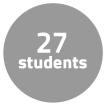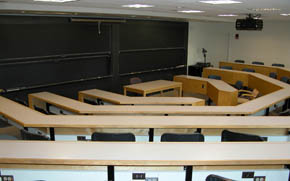Instructor Insights pages are part of the OCW Educator initiative, which seeks to enhance the value of OCW for educators.
Course Overview
This page focuses on the course 20.201 Mechanisms of Drug Actions as it was taught by Prof. Peter Dedon, Prof. Steven Tannenbaum, Dr. Mark Murcko, and Dr. Charles Knutson in Fall 2013.
This course addresses the scientific basis for the development of new drugs. The course is team-taught by four MIT instructors, and includes guest lectures by scientists in the pharmaceutical industry.
Topics covered in the course include mechanisms of action of drugs and drug classes, role of drug structure and drug transport proteins in uptake and distribution, kinetics of drug behavior in the human body, metabolism, drug interactions leading to toxicity, drug-receptor interactions, and the role of pharmacogenetics in drug actions.
Course Outcomes
Course Goals for Students
Learning Objectives:
- Develop an understanding of the scientific basis for drug development, drug mechanisms, drug disposition and drug safety
- Develop an appreciation for the role of pharmacokinetics, drug metabolism and drug interactions in the mechanisms of drug action
- Understand the balance between environment and pharmacogenetics in the toxicity and therapeutic outcome associated with a drug
- Understand factors that lead to success and failure in drug development
What do students get out of 20.201?
- Framework for understanding "drugs"
- Fundamental concepts of drug development and pharmacology
- Learn the language of the pharmaceutical and biotechnology industries
- Application areas for modern biological engineering, chemistry, biology
- Opportunities to meet scientists from drug companies
Possibilities for Further Study/Careers
Students will gain preparedness for graduate work in biological engineering or industry related jobs.
Curriculum Information
Prerequisites
Permission of the instructor
Requirements Satisfied
It is a “Restricted Elective,” which means that it intended to prepare students for advanced graduate work. Undergraduate students in biological engineering are required to take two restricted electives.
Offered
Every fall semester
Assessment
The students' grades were based on the following activities:
 30% Exam
30% Exam 20% Homework
20% Homework 30% Case study project
30% Case study project 20% Reading and discussion of the assigned papers
20% Reading and discussion of the assigned papersStudent Information

Breakdown by Year
A combination of advanced undergraduate (juniors and seniors) and graduate students studying biological engineering.
Typical Student Background
There are no formal prerequisites, but students should have knowledge of biochemistry and organic chemistry.
During an average week, students were expected to spend 12 hours on the course, roughly divided as follows:
Lecture
- Met 2 times per week for 1.5 hours per session; 27 sessions total.
Recitation
- Met 1 time per week for 1 hour per session; 11 sessions total. Attendance is optional.
- Recitations in the first half of the semester were used for reviewing lecture material and the homework, as well as quiz review.
- In the second half of the semester the recitation session was used for discussing and managing student projects.
Out of Class
- Read the textbook excerpts and supporting literature
- Complete homework assignments
- Study for the exam
- Work on the case study project
Semester Breakdown
| WEEK | M | T | W | Th | F |
|---|---|---|---|---|---|
| 1 |  |  |  |  |  |
| 2 |  |  |  |  |  |
| 3 |  |  |  |  |  |
| 4 |  |  |  |  |  |
| 5 |  |  |  |  |  |
| 6 |  |  |  |  |  |
| 7 |  |  |  |  |  |
| 8 |  |  |  |  |  |
| 9 |  |  |  |  |  |
| 10 |  |  |  |  |  |
| 11 |  |  |  |  |  |
| 12 |  |  |  |  |  |
| 13 |  |  |  |  |  |
| 14 |  |  |  |  |  |
| 15 |  |  |  |  |  |
| 16 |  |  |  |  |  |
 No classes throughout MIT
No classes throughout MIT Lecture session
Lecture session Guest Lecturer
Guest Lecturer Exam
Exam No class session scheduled
No class session scheduled Recitation
Recitation Assignment due date
Assignment due date

 Room 1 of 1
Room 1 of 1 